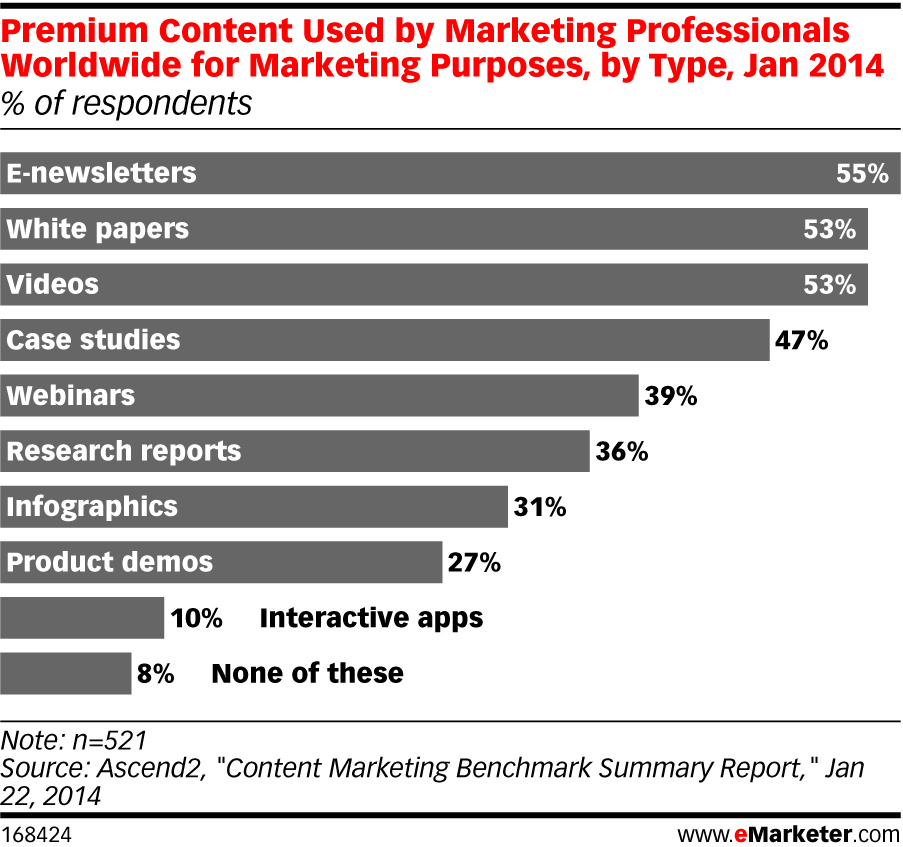Do You Know Your Audience? Content Strategy Ideas for Big Brands
October 17, 2014Budgets for content marketing grew to $44 billion in 2013, so it’s clear that many companies and their marcom departments are making content development a priority. Others, however, are left wondering why there is so much focus on it.
Developing and publishing effective content on a regular basis can increase brand awareness, establish you as a thought leader, build authority and drive conversions. From a search perspective, SEOs advise that content that is fresh and unique, published regularly, is contextually relevant to your website, and includes your top keywords can be an organic search success factor. Here are a few reasons why:
- Unique content increases the likelihood that others will link to it.
- For each link you receive, you also get a gold star from Google, adding to better page rankings.
- Awesome new content also attracts search engine crawlers to crawl your site and index the content.
- Having your content in a search engine’s index is essential for them to serve it to a user when they search for it.
These factors, combined with other elements of a solid content strategy, can have a positive impact on your overall search results and rankings.
But developing an effective content marketing and search strategy for your brand can be a huge challenge; ask any brand manager. However, with proper planning and investing in additional research about your target audience, it’s a challenge worth taking, with potentially strong return on your investment. The key is knowing what the right content is for your brand and audience. Having this valuable information is what will make your content more effective and help you reach your goals. This post will outline some of the ways you can create more effective content and help to ensure a better return on investment from your digital assets.
Type of Content
Analyzing your target audience has never been more challenging and more important as a result of more social networks and customer segments. The goal is not only to find the right type of content for your unique audience but to then deliver it to them in the way they want to receive it. One of the ways content is considered successful is when it can convert a user from someone who clicked on an organic result or paid ad, to someone who fills out a form on your website or moves from the interest stage to the buy stage of the purchase cycle. Another content success factor may be when a video goes viral, which was the intention of the content or search marketer. If a user receives content through a medium that they do not participate in, it’s unlikely they will reach this stage. If your users receive the type of content they want, in the way they want, the odds of that content being successful (however you measure that success) increases dramatically.
So what type of content should you create for your audience to achieve that success? And where should you focus your efforts?
If we look at eMarketer’s benchmark summary above, there are a lot of enewsletters, white papers, and videos being published. But a report released by the CCC and ContentWise states that social media is a major part of content marketing campaigns, with 81% of the respondents in their study creating content specifically for social media.
In today’s visual world, where many people focus more on what they can quickly see, scan or watch more than they read, should brand marketers’ invest in more visual rather than written content? Cisco has issued a video forecast that claims, “Globally, IP video traffic will be 79 percent of all consumer Internet traffic in 2018, up from 66 percent in 2013.” The study makes a strong case for video; however, we should carefully consider our brand and audience at every step of the way.

Quality Content
Developing a marketing strategy must include a focus on your audience in order to create content that matters to them. Do you know what your consumers’ favorite type of content is that is unique to them? If not, it is worth finding out. As already-high expectations around content continue to rise, understanding how your customers want to be engaged will be just as important as the questions they are asking.
One way to do this is to analyze their behavior and interests while paying close attention to their biggest challenges. Looking at where they go and which social networks or blogs they participate in might help reveal some of these insights. Watch for patterns and especially their buying patterns. What would prompt them to take it a step further and share your content with friends or colleagues? However, shares don’t come easy so you’ll have to help them with this—your content will have to be original, impressive, functional, maybe even funny or entertaining.
All those qualifiers make it more obvious that quality content can be quite subjective; and just as with traditional marketing and search marketing, content marketing is dependent on the same important factors such as industry, competition, and last but certainly not least, your audience. More about audience later.
Content Context
After answering many of the initial questions, your next step is to discuss topics, formats, and context. Is your material contextually relevant to the other content on your website? How are you presenting your content to your audience? Is it very dry and factual or does it tell a story? Telling a story is yet another way to gain those gold star links from the users and search engines because stories provide context that more fully informs the reader. Once your audience is fully informed around an issue or question they had, you have met half of your challenge of developing successful, relevant content.
Further engage them by showing them exactly how they can use the information you are providing. This kind of audience engagement is key and if you can personalize that engagement, even better. The more they feel that the content was useful and helped them with something important to them, the more likely that they will share it with others. Above all, be sure to connect your content with their issues and questions. By answering their questions, you will engage them; then it’s up to you to determine where they will go next, so be sure to also have effective calls to action built into your content.
Where to Start
A good place to start is to hold an initial content creation brainstorming session with colleagues and stakeholders. This could generate new ideas for unique material and could even generate some volunteers to work on specific projects. Some might have expertise in creating one type of content or working with vendors (if it’s outsourced). In any case, a big part of this discussion should be medium and delivery; however, before you commit to any one medium, you need to do your homework and again to fully understand how your audience wants your content delivered. Do they want to scan, read, watch, download or participate? Are they willing to share it? And depending on the type of audience (external partners, for example) do you have the kind of relationship with them to ask them to help share it socially?
More about Audience
Knowing the demographics and interests of your audience has always been a marketing priority; but with today’s demands from search engines and users for new and engaging content, you must learn as much as you can about those you want to attract. Audience research is not just about demographics and segmentation but also psychographics and technographics. Diving into this type of data and creating personas will yield information such as where your customers are hanging out online, why they prefer one product or type of content over another, and other useful facts that will steer your content creation and delivery channels. Creating personas to more fully understand your audience (especially if you have an extremely broad target market) is worthwhile because it will help you know what that “right” content is for them and add a higher level of quality to your digital assets. You’ll know what to serve them as well as how and where: written or video, image or text, via email, social network or on their mobile device (and which type).
From a search perspective, this data will also help you understand what language your target audience speaks (language of origin as well as jargon or industry-specific vocabulary). This can be a huge help in understanding phrases they use and queries they type into the search bar, which you can integrate into your content.
Whether you create personas, conduct surveys, research or buy data on your audience, you should base the rest of your content strategy on the results. The bottom line is that once you have done your due diligence to more fully understand the different segments of your audience, you can better influence your results.
Summary
For users to want to engage with new content and share it, they must consider it valuable; it must serve a purpose for them in any number of ways: it answers a major question they have about a topic, product or service; it helps them make an important decision or purchase; and it’s interesting, informative, or fun. When I find something that helped me in that way, I’m happy to share that with my friends and colleagues and they share the same with me. But obtaining this kind of detailed information about your target audience is not easy so you should be prepared to invest in this effort.
Whatever your unique content is that helps your audience, it should be exactly what they need, when they need it to visit your website, answer a call to action, share it, or move to the “buy now” phase of the purchase cycle. In order for that to happen, brands must fully understand their audiences beyond online profiles into a deeper who, what, and where.







